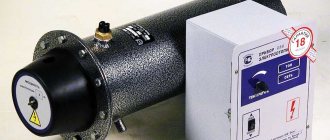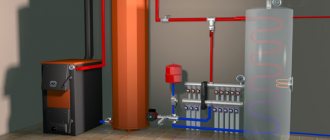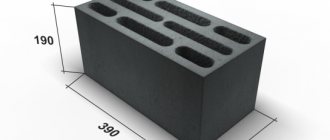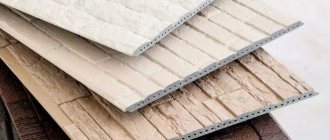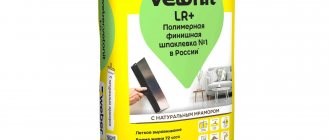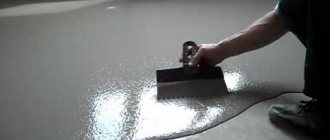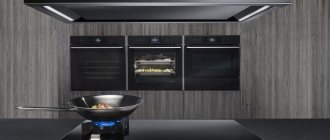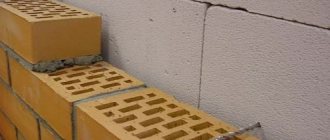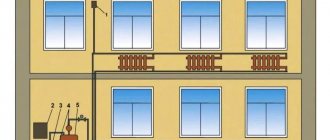In apartments of the housing stock created several decades ago, and in many private houses, there are batteries manufactured in the same years. Over such a period of operation, their characteristics have deteriorated and one should not expect complete heat transfer from them. While it is easy to update the appearance of radiators, restoring normal operation is sometimes impossible. When planning repairs, it is worth understanding whether the old heating batteries will continue to serve or whether it is better to replace them.
You can try to restore old heating batteries
Heat dissipation of a cast iron radiator
The power of a cast iron radiator directly depends on the area of its outer surface and lies in the ability to release heat energy at the highest possible coolant temperature. Basically, this value ranges from 80 to 200 watts per section . To calculate the required power, the following formula is used: for 25-30 cubic meters. m. battery power should be 1 kW . If there are several external walls, the power indicator increases.
Minuses
- Heavy weight. Cast iron is a very heavy metal; the weight of one section of a cast iron radiator can reach several kilograms. On average, this is 2-3 times more than the weight of a bimetallic battery section, and 4-6 times more than the weight of an aluminum radiator. .
- Price. One section of a cast iron radiator is noticeably more expensive than a section of a bimetallic or aluminum battery that is similar in size and heat transfer.
- Impossibility of installation in a system with automatic adjustment. The design features of the battery and the properties of the metal will prevent the sensors from receiving up-to-date information about the temperature of the coolant and surface. When choosing which heating radiators are best to install in an apartment, be sure to take this nuance into account.
- Low efficiency. Due to thermal inertia, heating a square meter of area will require much more energy and coolant than in the case of other types of batteries. This may be completely unimportant if your heating is centralized and you pay based on the square footage of the house. But if you have a gas boiler, you will have to spend more of your own money, and it will be spent mainly on heating the battery itself, and not on increasing the temperature in the room.
- Unaesthetic appearance. Note that this only applies to old batteries, but if you have just such ones, they are unlikely to fit harmoniously into a modern environment. In this regard, cast iron batteries of the new type are no different from their bimetallic or aluminum “brothers” - they look modern and stylish and will fit perfectly into the interior of any apartment.
Dimensions of a cast iron radiator.
In the Soviet Union, the overall dimensions of cast iron radiators had a certain standard. In one section, the distance between the centers of the coolant supply and discharge pipes ranged from 30 to 50 cm. The width of the section was not standardized and varied among different manufacturers. Almost all modern batteries also have these standards. The most popular model among cast iron products is MS-140. (installed in many “Khrushchev” and 9-story buildings of the 60-80s). The distance between the centers of the pipes is 50 cm; battery height 58.8 cm; width 9.3 cm; depth - 14 cm. The variety of overall dimensions of batteries is explained by the needs of customers.
Main types of heating devices
The following types of batteries are most often used in everyday life:
- Sectional. They are made from aluminum or several different metals. These structures consist of parts connected to each other using steel nipples. They look attractive and provide good air circulation. Such devices may include several sections in one battery.
Sectional battery Source eurosantehnik.ru
- Tubular. These designs are not widely used. Among their advantages are a long heat transfer time and an aesthetic appearance of the device.
Tubular battery Source stroy-podskazka.ru
- Panel. One of the most effective devices for home use. Pros: large working area, good level of convection, varied design and wide range of equipment. Such a battery can be selected for almost any room; the sizes of radiators differ markedly from each other. Among the disadvantages are high prices for products, as well as low operating pressure.
Panel battery Source gopb.ru
- Lamellar. They are characterized by a high level of pressure, have good heat transfer and provide effective air circulation. These devices can be used as in-floor convectors; they are available in a variety of shapes and designs.
Plate battery Source gidroguru.com
Manufacturers of cast iron radiators
Most of the Russian market is represented by domestic models. This can be explained by the fact that the cost of transporting cast iron batteries makes up a large part of its final cost. The main manufacturers include:
- CHAZ – Cheboksary Aggregate Plant (Russia)
- Minsk Heating Equipment Plant (Belarus)
- Kiran (Ukraine)
- Viadrus (Czech Republic)
What is decoupage and how did it appear?
Today, photos of decoupage heating batteries can be found everywhere - both on the Internet and in the catalogs of designers who so kindly offer their services in such a simple matter at a high cost. Why pay more if you can do it yourself, although more on that a little later, but now let’s dive into history to see when decoupage appeared, and also what they were used for.
Art originated in China at the dawn of the 12th century, and subsequently smoothly migrated to Europe, where it was most widely used in France. The method is based on cutting out various shapes or patterns from fabric, leather or paper, and then gluing them onto some surface.
In those days, decoupage was performed on:
In general, as soon as China shared the art, Europeans immediately began to apply it wherever possible. Well, today this method has smoothly transferred to radiators, allowing owners of private houses to decoupage heating radiators with their own hands without the help of designers.
Installation of cast iron radiators.
Almost all cast iron products are composite, consisting of separate sections connected by nipple bushings.
Gray cast iron is used in their manufacture. Paronite gaskets are installed between the individual sections. Horizontally, the flow of water always goes in one direction. Vertically, the current flows through channels, of which there are one or more. Depending on the number of vertical channels, the area and power of the battery increases. Due to the need to maintain strength and surface area, manufacturers cannot change the weight-to-power ratio much.
The large weight of the battery means reinforced fastenings.
Possible decoration options
If you ask a homeowner how he can quickly, effectively and most importantly inexpensively make beautiful heating radiators in his home, he will most likely have difficulty answering.
And the box just opened...
Decoupage of an old battery
In fact, there are a lot of options that will help transform your heating devices, giving them completeness and exclusivity. Let's list all the possible methods that can help create beauty and finally complement the interior design of a room:
Important! Decorating by painting radiators is a rather labor-intensive and painstaking process, so not every owner of a private home will want to use this method. In addition, advice immediately follows from this - use painting if your heating system is at the construction stage or you are going to repair radiators.
Important! When creating a screen, you need to select materials so that they do not create obstacles to the flow of warm air, otherwise the room will not warm up well enough.
And now the most interesting part - because next we will talk about how to finish heating radiators with your own hands. Let's take a closer look at the simplest, most economical type of decoration - decoupage, namely, where it is used and how it can be done at home.
Advantages of cast iron heating radiators
Heating appliances made of cast iron are very resistant to aggressive coolant environments. This is explained by the physical parameters of this metal. Cast iron radiators can remain corrosion-free for a very long time, even at elevated temperatures. In addition, virtually no harm is caused to cast iron and various chemicals added to the coolant.
If the device becomes clogged or leaks, they can be easily repaired. Blockages that occur in the radiator can be caused by the properties of the coolant with a high content of Ca and Mg salts. As a result of deposits on the inner wall of the device, it narrows, which leads to a deterioration in the heating rate and normal heat transfer. A leak in a cast iron battery can occur as a result of wear of the gaskets between the sections. It is better to eliminate all the problems described above during the summer preventive shutdown of water supply.
The cost of a cast iron battery is approximately equal to the cost of analogues made of aluminum and steel. But at the same time, it is worth noting that cast iron withstands water shocks much better and can withstand pressure surges of about 16 bar.
Cast iron devices can be used at high temperatures and pressures, due to their low coefficient of thermal expansion.
The heat output of the heater is quite high. To achieve the greatest effect from this property, special reflectors should be placed behind the cast iron radiator.
Installation of a cast iron radiator is easy, due to the fact that the radiator sections are connected using a threaded connection and paronite gaskets. The battery is connected to the ends of the pipes in the same way. A special key is used for threading, which can be used to disconnect any section without removing the side ones.
Very long product life of more than 50 years. The only thing is that during this time it is necessary to regularly remove deposits and replace gaskets.
Bimetallic batteries
Should cast iron batteries be replaced with bimetallic ones? When the cast iron option is not suitable, bimetal batteries are an excellent solution. Usually this word refers to the duo of aluminum and steel (instead of which copper is sometimes used). Aluminum plays the role of an external material, while the radiator core is made of steel, since this metal is more resistant to high temperatures and other adverse conditions. In this regard, it has similar characteristics to cast iron, because steel is not afraid of aggressive chemical environments, and it is also resistant to corrosion. And in terms of maximum withstand pressure, steel even surpasses cast iron - the steel core allows you to reach a working pressure of up to 30-40 atmospheres, and it is not afraid of possible water hammer.
Aluminum, in most modern models, has almost no contact with the coolant, while receiving energy from steel, it quickly heats up and transfers heat to the room. Another important advantage of bimetallic batteries is the small volume of coolant.
So, bimetallic batteries:
- lungs;
- graceful;
- heat up quickly;
- serve for a long time;
- not subject to corrosion;
- withstand enormous pressure;
- are characterized by high efficiency;
- have a small volume of coolant.
Speaking about specific models, let’s mention Alecord 350 - one of the best options in terms of quality and price. The weight of one section here is only 1.1 kg, while its heat output is 136 W. Working pressure is 25 bar (withstands up to 35), coolant capacity is 0.17 liters per section. For example, the Russian-made Halsen 350 has similar characteristics.
You can also note the interesting option Royal Thermo BiLiner 500. 171 W of heat transfer per section with its weight of 2.02 kg and volume of 0.2 liters is created on the basis of innovative high-tech solutions. Literally everything speaks about this - from the unusual design of the radiator to the 25-year warranty that covers it and the huge amount of insurance coverage. Country of origin: Italy.
Prices: summary table
| Model | Dimensions, mm | Working pressure, atm | Heat dissipation, W/section | Section price, rub. | Price 1 kW, rub. |
| Konner Modern 500 | 600/60/96 | 12 | 130 | 1 000 | 7 500 |
| STI Nova 500 | 580/80/60 | 12 | 124 | 850 | 6 850 |
| Viadrus Bohemia 450/220 | 540/225/86 | 10 | 100 | 7 650 | 76 500 |
| Viadrus Hellas 470/218 | 540/218/50 | 10 | 108 | 11 000 | 101 000 |
| RETROstyle TOULON 500/160 | 580/160/60 | 10 | 157 | 2 700 | 17 200 |
| Exemet Romantica 510/350 | 660/215/74 | 10 | 172 | 4 000 | 23 500 |
| RETROstyle WINDSOR 500 | 650/95/80 | 10 | 163 | 7 050 | 43 000 |
| Iron Lion Pion 600 | 600/180/65 | 10 | 118 | 3 900 | 33 000 |
Based on the price analysis, we can conclude: most of the products belong to a high price category, which makes them in demand by a narrow circle of buyers.
Radiators are an important part of the heating system in private houses and multi-storey housing. The microclimate in the house and the safety of operation depend on their correct choice. Cast iron radiators satisfy many parameters, but it is worth studying the manufacturer’s technical documentation and consumer reviews when choosing a specific battery model.
